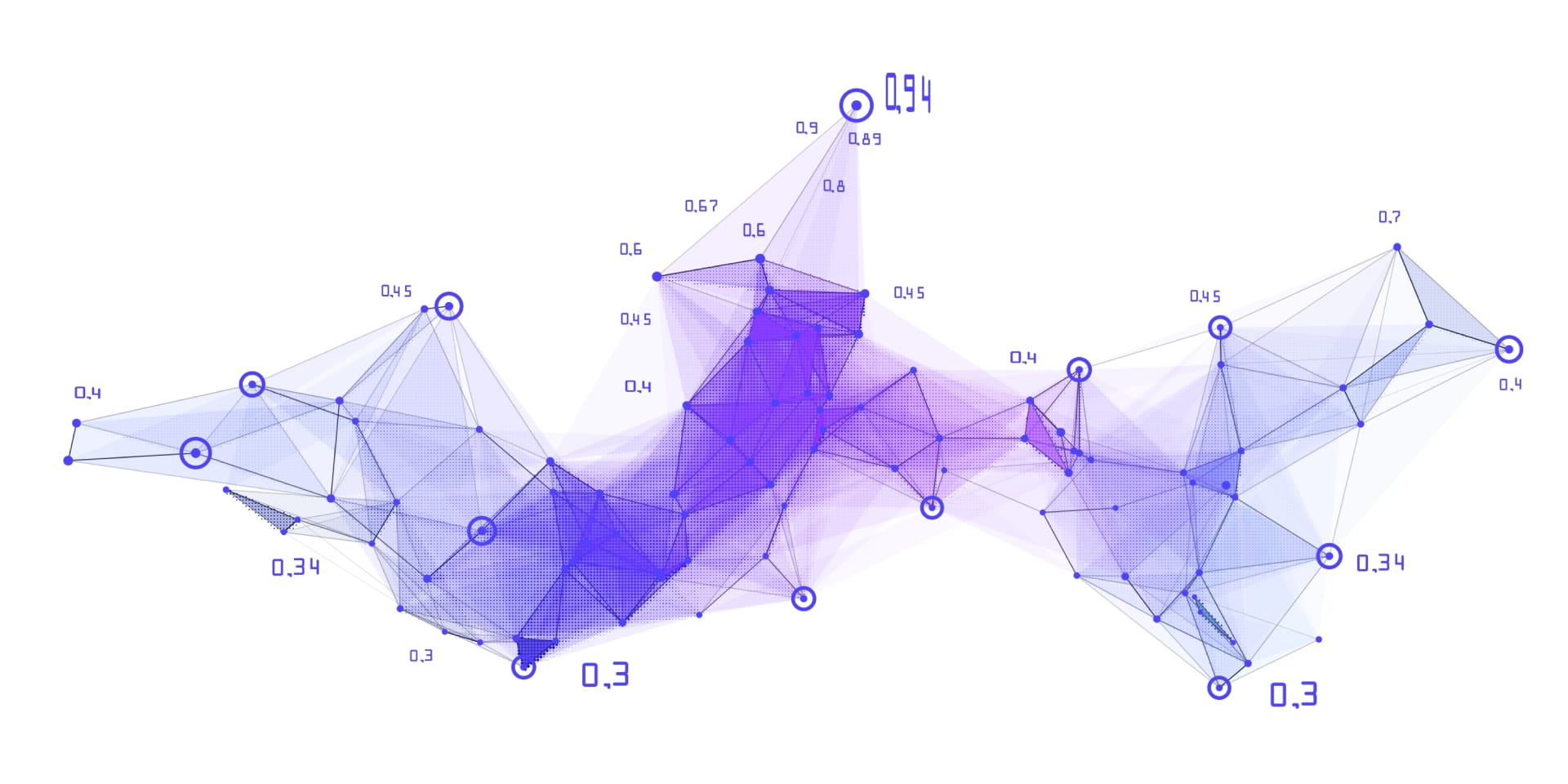Organizations are overwhelmed by vast amounts of data that aren’t aligned with business outcomes. While companies recognize the power of analytics in uncovering hidden patterns, enhancing customer experience, and driving competitive advantage, their data remains trapped in silos across multiple departments and systems. As a result, business users struggle to access the insights they need in real time, relying heavily on IT teams for reporting and analysis. This dependence not only slows down decision-making but also limits agility. Self-service analytics bridges this gap by empowering business users with intuitive tools that enable them to explore data, generate reports, and derive insights independently, without waiting for IT intervention.
What is Self-Service Analytics?
Self-service analytics is a modern approach to business intelligence that empowers business users to explore data, perform queries, and generate reports independently using intuitive BI tools, with minimal reliance on IT. By reducing the technical barriers to data analysis, this approach enables users to quickly build, customize, and modify reports with minimal training, accelerating data-driven decision-making across the organization.
Gartner estimates that the number of data and analytics experts in the business units will grow at three times the rate of experts in IT departments, which will force companies to rethink their organizational models and skillsets.
The growing demand for self-service analytics is fueled by evolving business needs and emerging roles such as the citizen data scientist. As organizations strive to foster a data-driven culture, business users increasingly expect direct access to insights without waiting for IT intervention. However, successfully enabling it at scale requires more than just deploying user-friendly tools. Many organizations underestimate the operational, cultural, and governance challenges involved. From ensuring data quality and security to establishing clear governance frameworks and providing ongoing user training, enterprises must invest in the right strategies and resources to manage, scale, and sustain self-service analytics effectively. Without a structured approach, self-service analytics initiatives risk leading to data inconsistencies, security vulnerabilities, and analytical silos that undermine the very agility they aim to provide.
Benefits of Self-Service Analytics
Reduced Dependency on IT
Traditionally, IT teams were responsible for building and maintaining dashboards, running queries, and fulfilling report requests, which often led to delays due to limited resources. Self-service analytics addresses IT bottlenecks by enabling business users to explore data, create visualizations, and generate reports independently.
By shifting routine analytics tasks to business users, IT can focus on higher-value activities, such as improving data infrastructure, implementing advanced analytics solutions, and ensuring data governance. This reduces the strain on IT teams and allows organizations to scale analytics capabilities efficiently.
Empowering Business Users
Self-service analytics tools democratize data access, allowing non-technical users to generate insights without requiring deep data expertise. This eliminates the reliance on specialized IT personnel and reduces the need for hiring additional technical resources.
With drag-and-drop interfaces, natural language queries, and interactive dashboards, self-service BI tools allow users to easily analyze data and answer business questions in real time. This increased autonomy leads to better problem-solving, improved efficiency, and faster response to market changes.
Faster Decision-Making
Traditional analytics processes often involve multiple handoffs between business users and IT, leading to delays in accessing critical information. Self-service analytics eliminates this lag by allowing users to generate on-demand reports and dashboards tailored to their needs.
With real-time access to insights, executives, managers, and frontline employees can make informed decisions without waiting for IT intervention. This agility is particularly valuable in fast-moving industries like retail, finance, and manufacturing, where quick decision-making can directly impact revenue and competitive positioning.
Establishing a Single Source of Truth
One of the key advantages is data consistency across departments. Unlike spreadsheets, which often exist in multiple versions across different teams, self-service BI platforms provide a centralized, up-to-date repository of trusted data.
Modern self-service tools integrate data from multiple enterprise systems, including ERP, CRM, HCM, and SCM, allowing users to generate custom reports based on their unique requirements. This not only improves collaboration and transparency but also helps eliminate data silos that hinder cross-functional decision-making.
Cost Savings and Scalability
Investing in self-service analytics leads to significant cost reductions in the long run. Many organizations evaluate analytics costs based on BI software licenses and infrastructure, but often overlook the hidden costs of IT support and maintenance.
- IT teams spend less time on report generation, reducing operational costs.
- Organizations avoid the need for expensive external consultants for basic analytics tasks.
- The platform can scale effortlessly as user adoption grows, without requiring a proportional increase in IT resources.
By enabling business users to handle their own analytics needs, organizations optimize IT spending and drive more cost-effective business intelligence strategies.
Self-Service Analytics vs. Traditional Analytics
Traditional analytics and self-service analytics both serve the goal of extracting insights from data, but they differ significantly in approach, accessibility, and operational impact.
Data Access and User Autonomy
Traditional Analytics: Business users must submit requests to IT or data teams to access and analyze data. IT then retrieves, processes, and delivers reports, often causing delays.
Self-Service Analytics: Business users can directly access and analyze data using intuitive BI tools without needing constant IT support, accelerating decision-making.
Speed and Agility
Traditional Analytics: Report generation and data analysis often follow a structured workflow, with IT teams acting as gatekeepers. This process can take days or even weeks.
Self-Service Analytics: Users can perform ad hoc analysis instantly, enabling real-time insights and more agile responses to business needs.
Scalability and IT Dependency
Traditional Analytics: IT teams are responsible for handling all data requests, which can become a bottleneck as data demands grow. Scaling requires additional IT resources.
Self-Service Analytics: Offloads much of the reporting workload from IT to business users, allowing IT to focus on governance, security, and infrastructure rather than routine reporting.
Customization and Flexibility
Traditional Analytics: Reports and dashboards are often pre-defined and rigid, requiring IT intervention for modifications or new report creation.
Self-Service Analytics: Users can easily customize and modify reports on demand, adapting to evolving business questions without waiting for IT.
Governance and Data Quality
Traditional Analytics: Centralized control by IT ensures strict governance, standardized data models, and high data quality, but limits flexibility.
Self-Service Analytics: Provides flexibility but requires strong data governance frameworks to prevent inconsistencies, misinterpretations, and security risks.
Business Impact
Traditional Analytics: Best suited for complex reporting needs, regulatory compliance, and high-accuracy, enterprise-wide reports that require deep IT oversight.
Self-Service Analytics: Ideal for dynamic business environments where quick insights, decentralized decision-making, and democratized data access drive competitive advantage.
Self-Service Analytics Considerations
Aligning Business and IT
One of the biggest challenges in self-service analytics initiatives is bridging the gap between business users and IT. Business teams seek agility and quick access to data, while IT focuses on security, governance, and system integrity. A lack of alignment can lead to friction, inefficiencies, and failed implementations.
To ensure success, organizations must foster collaboration between these two groups from the outset. IT should take on an enabler role, guiding business users in leveraging analytics tools effectively while maintaining governance and security. Meanwhile, business users must develop data literacy skills and follow governance guidelines to prevent data mismanagement. Establishing clear roles, expectations, and workflows between business and IT can help create a self-service analytics environment that balances flexibility with control.
Flexible Data Governance Approach
As organizations embrace self-service analytics, adopting a flexible and adaptive data governance strategy is crucial. Overly centralized governance slows down adoption, discouraging business users from leveraging analytics. However, a complete lack of governance can result in poor data quality, misinterpretation of insights, and security vulnerabilities.
A hybrid governance model is often the best approach, where IT sets guardrails such as data access controls, standardized metrics, and data lineage tracking while allowing business users the autonomy to explore and analyze data within those boundaries. Additionally, organizations should define roles and permissions to ensure users only access relevant data while maintaining compliance with industry regulations.
Onboarding and Training
Providing the right training and support is essential to maximize adoption and prevent misuse of self-service analytics tools. Many organizations overlook the importance of structured onboarding, leaving business users unsure of how to effectively analyze data and generate insights.
A comprehensive training plan should include:
- Basic data literacy training to help users understand key analytics concepts.
- Tool-specific training to familiarize users with self-service BI platforms.
- Use-case-driven learning to demonstrate how analytics can solve real business problems.
- Ongoing support and knowledge-sharing forums to encourage continuous learning and best practices.
By investing in a structured onboarding process, organizations can scale self-service analytics adoption while ensuring users are confident and capable in their data-driven decision-making.
Conclusion
While self-service analytics offers immense benefits, successful implementation requires a well-thought-out strategy. Organizations must balance user empowerment with governance, invest in training, and foster collaboration between IT and business teams. By addressing these key considerations, companies can unlock the full potential of self-service analytics, accelerating innovation, improving efficiency, and driving data-driven decision-making at scale.
Note: This blog was originally posted in 2020 and updated in February 2025





